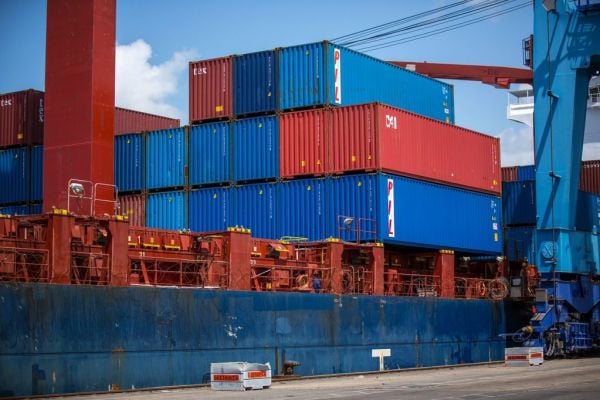The retail industry is full of resilient and quick-thinking solutions providers who, time and again, have created opportunity from the challenges that they face. Lately, however, the industry’s reputation for adapting quickly to changes in the global economy has been sorely tested. Brian Daly of Brian Daly Consulting reports.
In recent times, we have faced extreme weather events, Brexit, Covid-19, and labour shortages, with collective supply chains meeting the challenge and facilitating unparalleled growth over the last two years.
Now, as we look ahead, and as the market contracts with the opening of hospitality and the removal of restrictions – all against a backdrop of inflation – we again find ourselves having to adapt with lightning speed.
So, how can we rise to the latest challenges collaboratively?
Retail supply chains made a significant move from direct-to-store deliveries by suppliers to direct to centralised warehouses, for onward delivery to retailer stores.
This operational change was significant at the time, and as we look at the rising costs in the supply chain, and the cost of goods in general, it has proven to be an essential behavioural change in reducing delivery costs and improving retailer efficiencies in receipt of goods.
Fresh Supply Chain
Retailer warehouses stocking long-life products carry 12 to 15 days of stock, which buffers the supply chain against short-term supplier shortages due to production issues, delays at ports, or lack of available transport.
In essence, poor forecasting against demand on promotional activity is where shortages in supply will be evident.
Outside of this, the system is robust, delivering in excess of a 99% service level to stores.
The fresh supply chain doesn’t have this luxury.
Due to short use-by dates, there is only a small range of product that can be stock held, to provide a similar buffer.
The balance of product is operated as part of a pick-to-zero system.
This means that any supplier shortages will be felt on retail shelves within 48 hours.
Stock availability has been a challenge, but one that has been managed incredibly well through collaboration by retailers and suppliers alike.
A high degree of resilience and empathy was displayed on both sides in the face of these challenges, which resulted in high levels of availability of primary products within the fresh category.
Some of these challenges will remain long after the country has completely returned to pre-pandemic norms.
Inflation Pressure
When we think about logistics, we generally think about the last mile to the shelf or to the warehouse floor.
We tend not to consider the number of logistical points as finished goods are developed from their raw state.
For example, logistics has a major impact on inflation.
The world’s second-largest shipping company reported last quarter that volume was down by 4%, with profits up by 80%.
This puts the cost challenges in logistics into perspective.
Low-cost geographies, where goods could be sourced cheaply, are now becoming less attractive, as higher shipping costs offset benefits.
Packaging costs are also under pressure, with paper mills not committing to pricing contracts for more than one quarter.
This is in part due to raw-material availability and raw-material inflation exceeding 180%. Another factor is the forward buying and stockpiling of corrugated packaging by online retailers.
The same raw-material costs are also affecting pallet prices.
Energy and fuel price increases are also contributing to inflation at an unprecedented rate.
Diesel prices in 2017 were at €1.22 per litre and are tipped to break €2.00 per litre in the coming months.
Gas and electricity have seen increases of over 100% in the last six months.
However, these are costs that can be overcome commercially, whereas the availability of people presents a different challenge.
Labour Shortages
Labour shortages are being experienced in production, warehousing and logistics, with all stakeholders having to increase wage rates to retain and attract staff.
OK – investment can fix some of it, but not all of it.
Repatriation of a substantial part of the workforce has occurred in recent years, as living conditions in employees’ native economies have improved. This has been evident with Eastern European colleagues.
The increase in online shopping has created demands for labour – not just traditional online operators, but in retail, where there is also a bricks-and-mortar operation.
If we look at logistics, historically, the system was, to a high degree, linear.
The supplier delivered to the store, and the customer visited the store and transported the goods home. With the emergence of online shopping, the retailer is delivering the goods home to the shopper.
E-commerce retailing has generated a requirement for drivers, which is causing shortages of qualified drivers and adding to the inflationary pressures within logistics.
Social distancing has also had an impact on production, as it resulted in increased hours to maintain production rates, which, in turn, has led to exponentially higher costs to produce finished goods.
Geopolitical Factors
The Russian invasion of Ukraine is devastating for Ukrainian citizens, and it will undoubtedly impact the country’s ability to trade in the short-to-medium term, and perhaps in the long term.
Damage to infrastructure and production facilities, coupled with the dislocation of civilians, will add to the suffering of the Ukrainian people.
In addition, Ukraine is a major producer of cereals, oils and seeds, and disruption to the supply and planting of crops in spring will add to inflationary pressures in the coming months.
However, unlike the civil war in Syria, where sanctions were imposed, I believe that Ukraine will be given every support to re-establish trade and reduce the long-term impact on its people.
Volume in any operation, coupled with delivery frequency, is the key to delivering optimum efficiency within the supply chain, and particularly in the fresh supply chain.
We know that shoppers want choice when visiting large-format stores, and these stores more than meet their customers’ expectations. The corollary of this is what shoppers expect when visiting discounters and convenience stores.
They expect the function they are shopping for to be available.
Brand is secondary. However, pack size is important, so a right-sized range and pack size are key to attracting shoppers, meeting their requirements, and driving volume through stores and operations.
Resistance To Inflation
Grocery retailing is one of the most competitive environments, with shopper awareness of price and value at an all-time high.
Visibility of pricing in store and online is used in planning shopping trips and identifying what will be purchased, and where.
It is understandable that nobody wants to be the first mover, so it is incumbent on all involved to work collaboratively, to alleviate this pressure.
In the long term, if inflation is not passed on to the shopper at the RRP, the supplier’s ability to provide a meaningful level of promotion, to enable a point of difference, will be diminished.
This will lead to a reduction in the gap between the standard RRP and promotional RRP, thus affecting the value proposition and point of difference that can be generated between retail brands.
The Big Issues
A major cost in the fresh supply chain is the underutilisation of vehicles, and this is particularly prevalent where retailers expect early-morning deliveries.
This concentration of activity creates vehicle redundancy, which adds cost to logistics operations.
Large retailers have improved their business rhythm, utilising the 24-hour flow of goods, thereby maximising the infrastructure of their warehouses, vehicles, and store operations.
A clear call-out for me is to elongate the times that stores will accept deliveries.
Have we potentially over-engineered the range offered to the shopper? I don’t believe so, although, regarding the supply chain, I would question the iterations of case sizes that suppliers have engineered to meet the requirements of store formats for promotion activity and in the wholesale channel.
This is where we are engineering inefficiency into the supply chain and production operations.
The rationale for these case formats is supported by quality commercial data – until production and supply chain come under pressure. This is the acid test for the rationale.
Multiple case formats might support sales, but at what cost to efficiency?
The shopper only sees the finished product on shelf, so there is no impact on his/her behaviours.
These case formats are space-hungry in warehouses and time-consuming in production.
Availability is a key driver of sales and has become an important metric of performance for retail operations.
I would strongly recommend that suppliers consider their ‘on-time in-full’ service-level metrics and critically ask, what needs to change?
As they say, nothing worth having comes easy, and although many of our recent challenges have been unprecedented – and, let’s be honest, at times, brain-frazzling – we have seen the benefits of collaboration within our industry like never before.
And I believe a similarly collaborative approach will help us navigate inflation and supply chain challenges as we face up to – and face down – challenges brought on by the changing world around us.
© 2022 Checkout – your source for the latest Irish retail news. Article by Brian Daly. For more supply chain news, click here. Click sign up to subscribe to Checkout.









